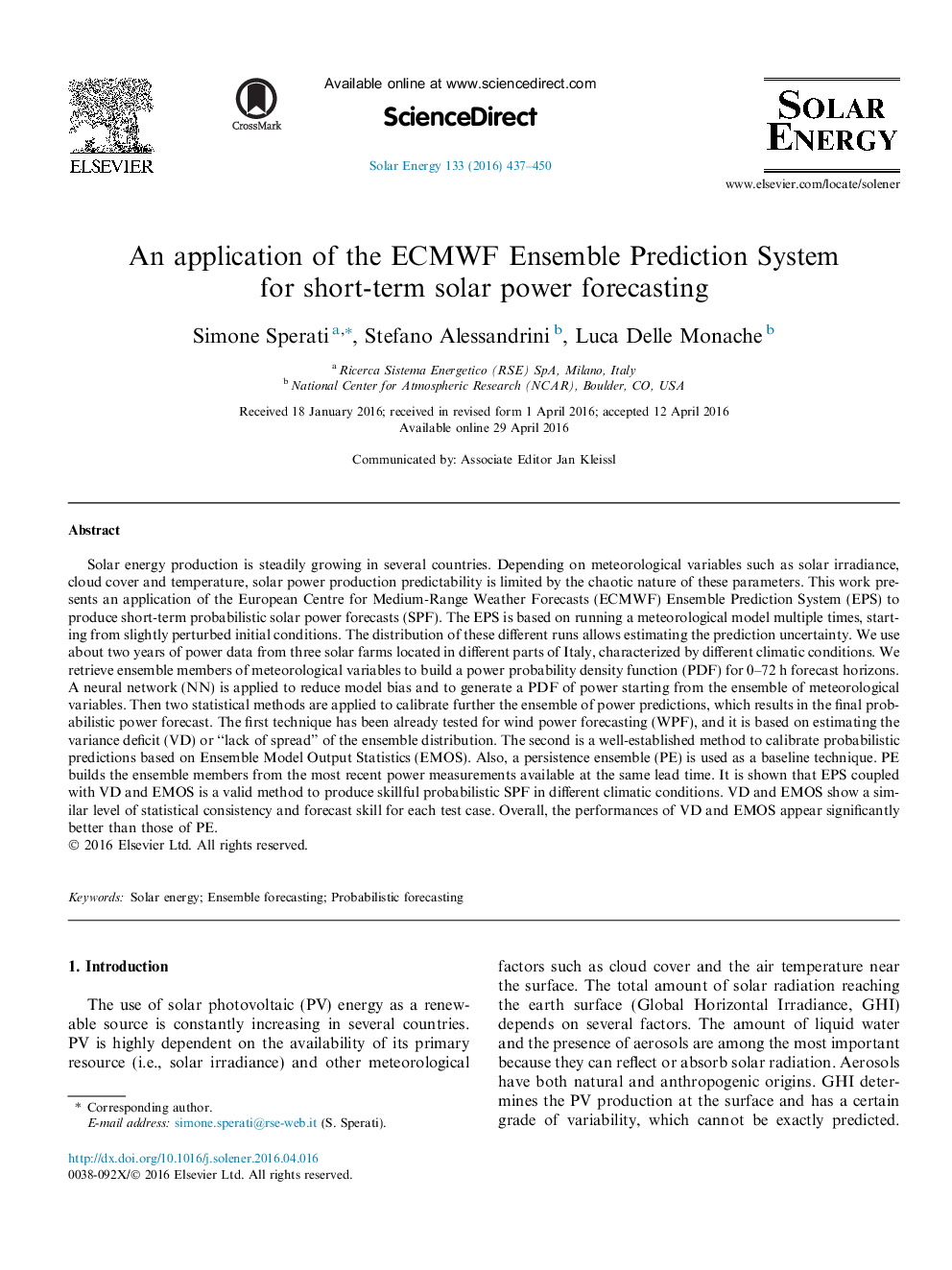| کد مقاله | کد نشریه | سال انتشار | مقاله انگلیسی | نسخه تمام متن |
|---|---|---|---|---|
| 1549361 | 1513085 | 2016 | 14 صفحه PDF | دانلود رایگان |

• A novel method for solar power probabilistic forecasting is proposed.
• The prediction uncertainty is estimated.
• Ensemble models can provide skillful solar power forecasts in different climatic conditions.
Solar energy production is steadily growing in several countries. Depending on meteorological variables such as solar irradiance, cloud cover and temperature, solar power production predictability is limited by the chaotic nature of these parameters. This work presents an application of the European Centre for Medium-Range Weather Forecasts (ECMWF) Ensemble Prediction System (EPS) to produce short-term probabilistic solar power forecasts (SPF). The EPS is based on running a meteorological model multiple times, starting from slightly perturbed initial conditions. The distribution of these different runs allows estimating the prediction uncertainty. We use about two years of power data from three solar farms located in different parts of Italy, characterized by different climatic conditions. We retrieve ensemble members of meteorological variables to build a power probability density function (PDF) for 0–72 h forecast horizons. A neural network (NN) is applied to reduce model bias and to generate a PDF of power starting from the ensemble of meteorological variables. Then two statistical methods are applied to calibrate further the ensemble of power predictions, which results in the final probabilistic power forecast. The first technique has been already tested for wind power forecasting (WPF), and it is based on estimating the variance deficit (VD) or “lack of spread” of the ensemble distribution. The second is a well-established method to calibrate probabilistic predictions based on Ensemble Model Output Statistics (EMOS). Also, a persistence ensemble (PE) is used as a baseline technique. PE builds the ensemble members from the most recent power measurements available at the same lead time. It is shown that EPS coupled with VD and EMOS is a valid method to produce skillful probabilistic SPF in different climatic conditions. VD and EMOS show a similar level of statistical consistency and forecast skill for each test case. Overall, the performances of VD and EMOS appear significantly better than those of PE.
Journal: Solar Energy - Volume 133, August 2016, Pages 437–450